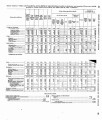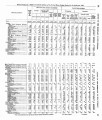| OCR Text |
Show I REPORT OF THE SECRETABY OF THE INTERIOR 3 Shortage of funds for the support of Indian schools makes it im- I possible to equip them adequately. Expenditures for such essentials as textbooks, library books, maps, miscellaneous classroom supplies and equipment, furniture for dormitories, machinery for shop and farm are so limited as to decrertse efficiency. Paucity of textbooks ehildren of school age. Until m n t l y the courses offered Indians. were all of elementary grdes. No completd high-school courses were taught for them until 1921, and then at only one school. In 1925,: three such courses were added; one was added in 1926 and a fifth in 1927. The increase during the last thee years in the number of pupils-junior and senior gradeehaa been by 1,178 in the former and by 526 in the latter. There sre now only 'six institutions main< tained by the Federal Government where Indians may receive a high-school education. Elementary and junior high-school courses are also taught in. these institutions, the senior high-school grades consti-tuting only one department. There is not an Indian school m the United States that is strictly a high school. Contrast these conditions with the educational advantages offered. the white population. During the last decade high-school enrollment. in the United States has increased from 1,600,000 to 4,000,000. There are enrolled in colleges, universities, and other institutions of higher learning nearly a million young men and women, and untold thou* sands of youths and adults attend night and continuation schools.. The ekollment in the public high schools in the United States is approxjmately 1 to every 6 pupils of school age, while among Indians it is only 1 to every 20. The aggregate number of Indians in institu-tions of higher learning or who are pursuing extension courses is negligible. The yearly allotments for the support of Indian schools vary from $230 to $260 for each student, or from $4.73 to $5 per u-eek. The increase in these allotments in the last 10 years ranged from only 10 to 20 per cent. Let this per capita coat be compared with the fol-lowing statistics showing the increase in the weekly cost per student, for example, in Wisconsin State institutions, and note that in Wis-, consin during the last 10 years it has almost doubled. State hospital ......... : ........................................................ Q e n d hospitsl for insaw ....................................................... State sanatorium ................................................................ state Won. ..................... I. ............................................. State relormatmy ............................................................... Industrial school for born ........................................................ Industrial school for girls (1918) ................................................. State school lor deaL ...... I ..................................................... Stste school lor blind ............................. ............................... 1918 $is2 6.72 10.a8 8.80 6.14 3.84 4.02 he1 . . 8.1 2 1828 $7. BI la 17 17.03 6. ?$ 7.28 8 W (1828) 8.64 11.61 16.72 |





























































